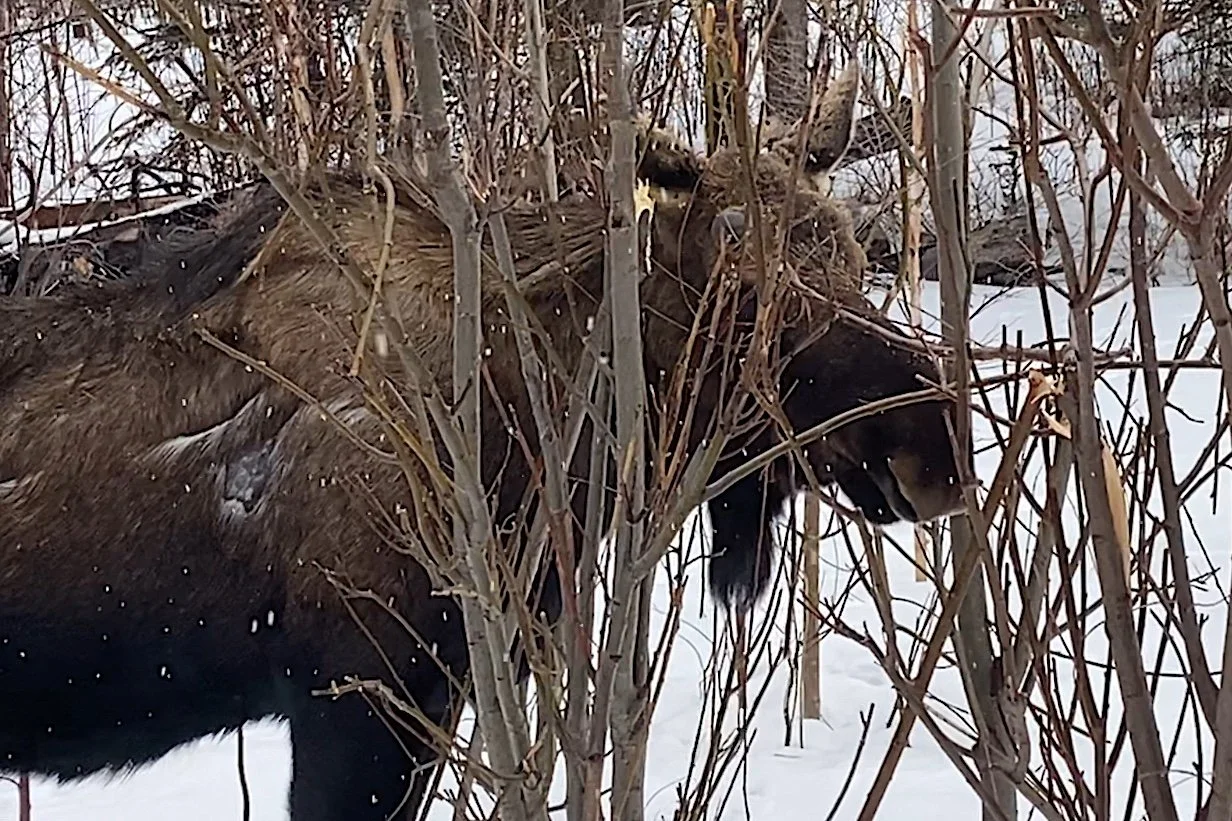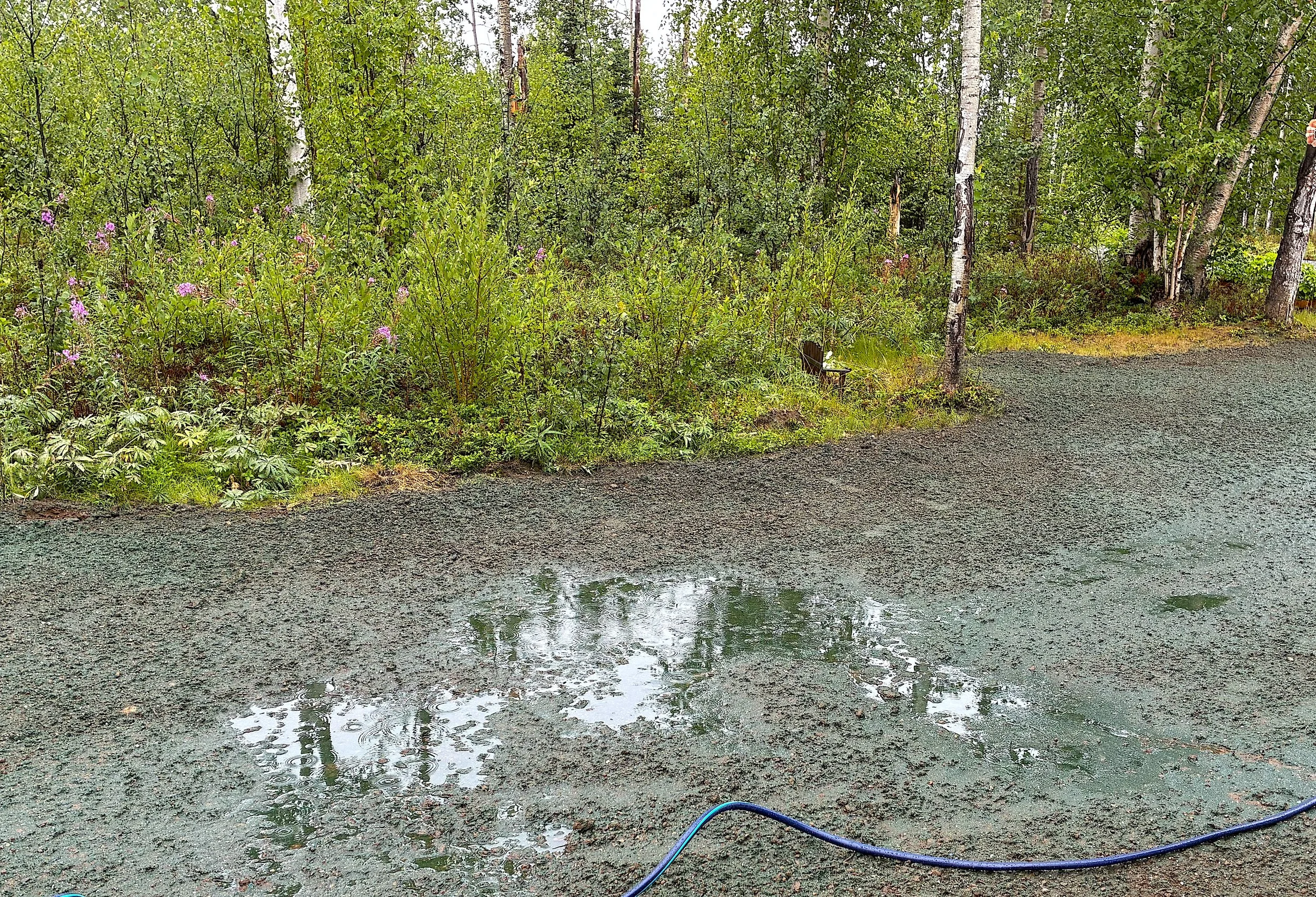How to Prepare Your Alaska Landscape for Winter
Around here, winter shows up fast, and your yard has to keep up, ready or not. Once fall settles in, the transition can happen overnight. That’s why homeowners in the Mat-Su Valley and Anchorage should start preparing lawns, garden beds, trees, and outdoor spaces well before the first hard freeze. Doing the work in late August through September protects your landscape and helps it bounce back quickly when spring returns.
Shape the Ground Before the Freeze Locks It In
Your yard’s root systems remain active into early fall. Whether you’re working with a lawn, garden beds, or shrub borders, what you do to the soil now will shape how your landscape performs next spring.
Work That Can't Wait Until Spring
Frozen ground traps everything: poor drainage, soil compaction, and grading issues. Focus now on tasks that require bare, workable soil.
Break Up Compacted Areas
Use a digging fork or aerator in areas where water pools or soil feels dense. Avoid mechanical tillers in planted beds since they disrupt soil structure and bring weed seeds to the surface.
Test, Don’t Guess
If certain areas underperformed this year, take a soil sample. Focus on pH, phosphorus, and organic matter levels, all of which affect early spring growth. If lab results come back in time, you can begin light amendments this fall. If not, use the data to plan targeted fixes in spring.
For guidance on how to sample and where to send it, the University of Alaska (UAF) Cooperative Extension offers a current list of regional labs and step-by-step instructions.
Amend Selectively
In flower beds and around shrubs, mix in compost, partially decomposed leaves, or fine bark mulch. Focus on improving structure and slow-release nutrients, not starting over. A light touch now saves effort later.
Regrade Where Needed
Look for settled edges near raised beds or low spots in the lawn. Smooth and slightly crown surfaces so snowmelt sheds evenly instead of pooling or refreezing.
Winterizing Your Lawn Before the Frost
Lawns share many needs with garden beds, but their broad, exposed surface makes them especially vulnerable to snow mold, compaction, and suffocation. Fall prep isn’t about stripping everything away. It’s about clearing what harms and leaving what protects.
Mow Lower Before Snow. Keep your final mow between 1.5 and 2 inches. Longer grass mats down under snow and encourages snow mold (usually a pink or gray color). A shorter cut helps blades stay upright and breathable under snowpack.
Clear Debris That Does More Harm Than Good. Whole leaves, especially birch, trap moisture and block airflow, which is a perfect setup for disease under snow. Rake thoroughly to remove cones, clippings, and leaf mats. Just keep it loose and no more than 2 to 3 inches deep.
Fertilize with Dormancy in Mind. Use a late-season fertilizer low in nitrogen but rich in potassium and phosphorus. You’re feeding roots, not pushing new growth. Apply no later than mid-September so nutrients absorb before the soil shuts down
Prepare Woody Plants for Alaska’s Harshest Season
By late September, your woody plants are on their own unless you step in. Drying winds, snow load, and hungry moose all take a toll on plants without added support.
Prepare Shrubs for Snow and Stress
Upright shrubs like juniper and arborvitae tend to split under heavy snow. Once branches are bent, they rarely bounce back.
Use soft twine or stretch tie to loosely bundle tall or columnar shrubs. Think of it as a gentle winter coat, not a corset.
Wrap burlap around newly planted or wind-exposed shrubs (especially near driveways or open fields). It shields branches from wind and cushions them from snow weight.
Mulch around the base with 2 to 3 inches of bark, but not up the trunk, just in the root zone. This guards against temperature swings and insulates shallow roots.
Avoid using plastic wrap. You’re protecting a plant, not storing leftovers.
Keep Tree Trunks Safe and Stable Through Winter
Young trees and thin-barked species (like mountain ash or birch) are winter favorites for voles and moose, especially when food is scarce.
Install rigid plastic tree guards or hardware cloth cylinders around trunks, especially anything under 6 inches in diameter. Go about 3 feet high, or higher in deep snow zones.
Check mulch rings and reapply if soil is exposed. Keep mulch in a wide donut shape, never touching the trunk.
Stake only if necessary. If your tree is still adjusting to strong fall winds, a flexible staking system can help. Remove in spring once the root system is stronger.
Get Ahead of Drainage Problems Before the Ground Freezes
It’s easy to overlook drainage when everything looks dry. But in Alaska, poor fall drainage turns into ice ruts, flooded basements, or soggy lawns by spring. Once the ground freezes, your options vanish.
Where the Water Wants to Go
Walk your property during rain or with a hose. Look for pooling near patios, steps, or beds. Even a subtle slope in the wrong direction can create major runoff issues in spring.
Why Frozen Ground Makes It Worse
In early spring, the topsoil is still frozen. Meltwater moves sideways across the surface — often straight toward your foundation or garage. Bad grading just speeds it up.
Downspouts That Work
Make sure downspouts extend at least 4 to 6 feet away from the house. Replace broken extensions and ensure splash blocks are angled properly, not buried under sod or gravel.
Manage Swales, Paths, and Low Spots
Clear swales, gravel paths, and trenches of cones, leaves, and debris. Clogged channels send meltwater where it doesn’t belong. While the ground is still workable, regrade low areas around patios and walkways. Even a 1-inch-per-foot slope makes a difference.
Preparing Flower Beds for a Clean Start in Spring
As plants begin to die back in fall, it’s the right time to reset your flower beds. Cleaning up now prevents disease, discourages pests, and gives next year’s garden a healthier foundation.
Tidy Up Plants Before Snowfall
Cut back perennials with soggy or frost-damaged stems, especially mold-prone types like delphinium and monarda. This improves airflow and helps prevent fungal issues before snow cover sets in.
Leave seed heads on coneflowers like echinacea or rudbeckia if you want winter texture or to feed overwintering birds.
Pull annuals completely. Most are done by early fall, and leaving them to rot encourages weeds and disease in spring.
Protect the Soil Through Winter
Cover bare soil with a 2- to 3-inch layer of bark mulch or shredded leaves. This helps insulate plant roots and maintain more consistent soil temperatures. In raised beds, where freeze-thaw cycles are more intense, mulching also reduces the risk of frost heaving.
Once your beds are cleaned up and mulched, you’ll be in a much better position come spring — but it’s also the perfect time to step back and ask if your landscape is really working for you.
Is Your Landscape Ready for Next Year?
If your yard didn’t live up to expectations this summer, fall is the right time to plan ahead. Walker Landscapes designs and installs durable, beautiful outdoor spaces built for Alaska’s climate. Whether you need better drainage, new garden beds, or a full layout rethink, we’re here to help. Explore our residential landscaping services to see how we can transform your property.
Call us now at (907) 357-2555 to schedule a consultation and start shaping next season’s landscape today.
About Walker Landscapes
Walker Landscapes is a trusted landscaping service proudly serving the Mat-Su Valley and surrounding areas including Sutton, Glacier View, Chugiak, Eagle River, Big Lake, and Anchorage. Our services include custom landscape design, patios, lawn installation, garden beds, and raised planter boxes. Every project is tailored to fit Alaska’s unique environment.
We design outdoor spaces that are attractive, functional, and built to handle the demands of northern seasons. From bare ground to fully planned yards, our work reflects strong local knowledge, attention to detail, and long-term durability.
Seth Walker, Co-owner
Jeff Walker, Co-owner






